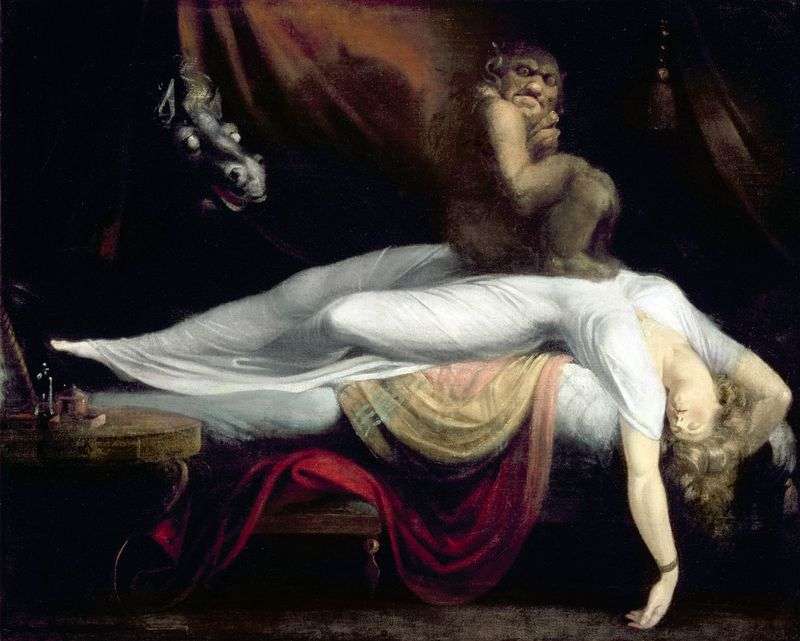
One of the most progressive artists of his time – Johann Heinrich Fussli, a native of Switzerland, son of the portraitist Johann Caspar Fussli.
Under the influence of his father, as well as the president of the Royal Academy of Arts Joshua Reynolds Füssli engaged in painting. In 1770, the painter goes to Italy. The study of frescoes and paintings by Michelangelo strongly influenced the artist’s further work. Also, the works of the painter were influenced by figures from the world of literature, for example, Shakespeare.
Fussli was appointed professor of painting at the Royal Academy and became one of the best English artists of the 18th century.
Like the contemporary of William Blake, Fussley’s strength as an artist lies in the brightness of the images. Acknowledgment is the picture “Nightmare” – the most unusual masterpiece of the master.
Fussli was rediscovered by Expressionists and Surrealists of the 20th century who admired his work.
The painting, created shortly after the artist’s return from Italy, was first shown to the public in 1782, at the annual exhibition at the academy. Her instant and noisy success contributed to the fact that Fussli won the reputation of a creatively talented London artist. After the extraordinary popularity of his first canvas, the artist creates three other paintings
The picture depicts a sleeping woman, helplessly located on the edge of her bed. Her “nightmare” is an ape-like incubus sitting on the body of an unhappy woman. The image of the horse illustrates the hidden meaning of the picture: the English name “Nightmare”, translated as “Nightmare”, creates a complex pun with the translation of “Night mare” – “Night mare”. In addition, linguists found that the name of the canvas also refers us to the incubus, probably to the very monster on the bed.
However, the exact meaning and hidden symbolism of the images remain unclear. Also, without answers, there are questions about why a woman lies in such a helpless pose and whether there is a sexual implication in the arrangement of the figures in the picture.
Some art critics believe that the picture was inspired by German legends about demons that come at night in images of horses, witches and so on. Other historians believe that the nightmare illustrates the artist’s unrequited love for Anna Landhold – a woman whom the artist met while traveling through Europe. This version is supported by the fact that an unfinished portrait of a woman is found on the reverse side of the canvas.
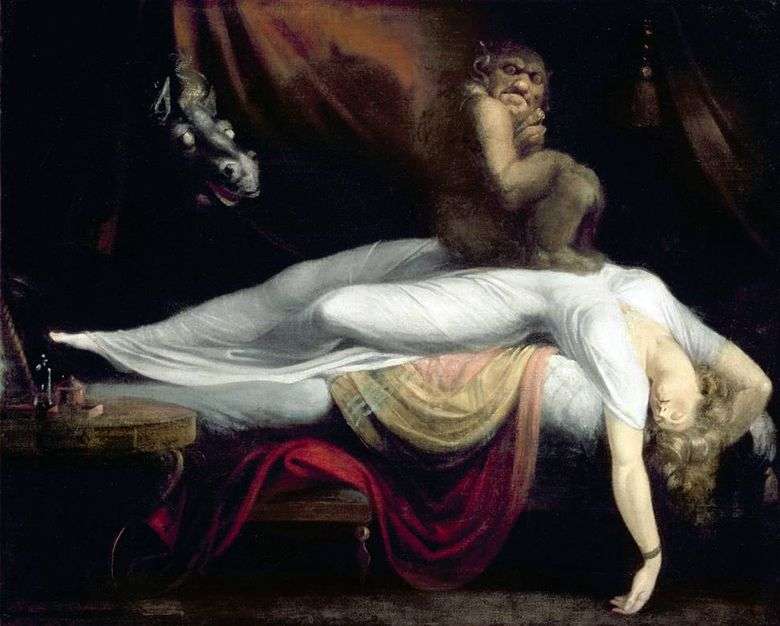 Pesadilla – Johann Heinrich Fussli
Pesadilla – Johann Heinrich Fussli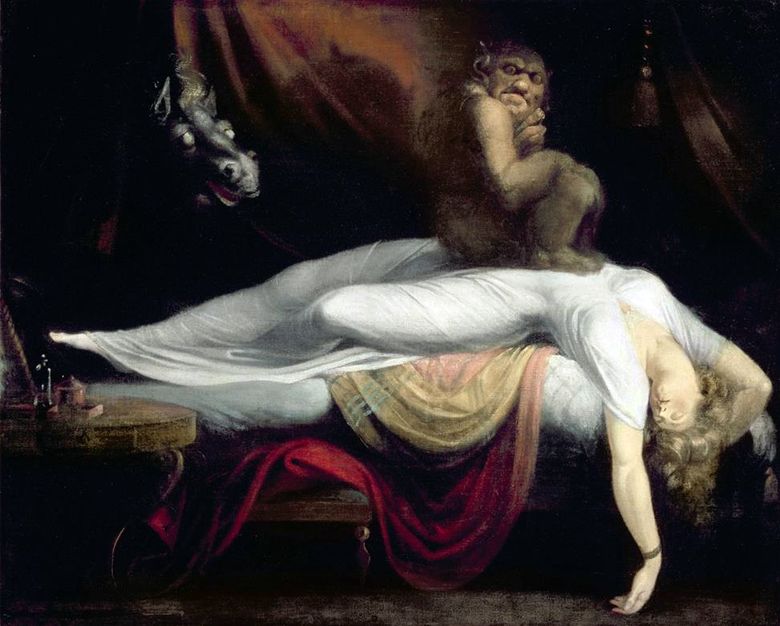 Cauchemar – Johann Heinrich Fussley
Cauchemar – Johann Heinrich Fussley The Nightmare by Henry Fuseli
The Nightmare by Henry Fuseli The artist in his studio by Francois Boucher
The artist in his studio by Francois Boucher The Triumph of Religion in the Arts by Johann Friedrich Overbeck
The Triumph of Religion in the Arts by Johann Friedrich Overbeck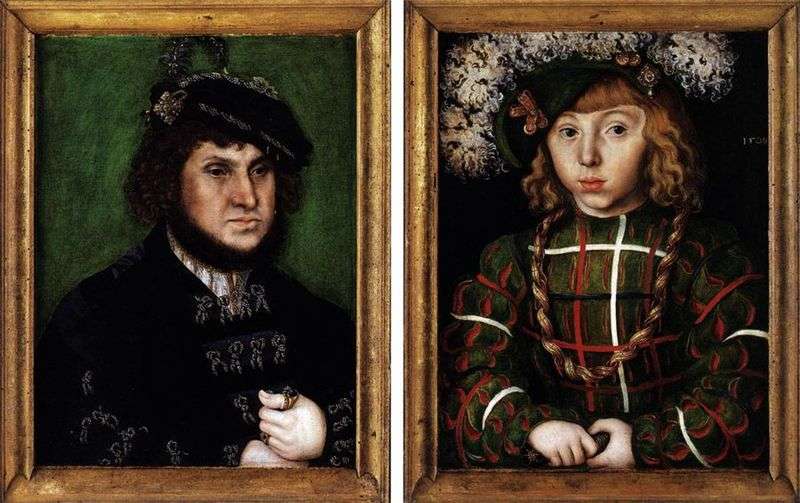 The double portrait of Johann the Tough and his son Johann Friedrich by Lucas Cranach
The double portrait of Johann the Tough and his son Johann Friedrich by Lucas Cranach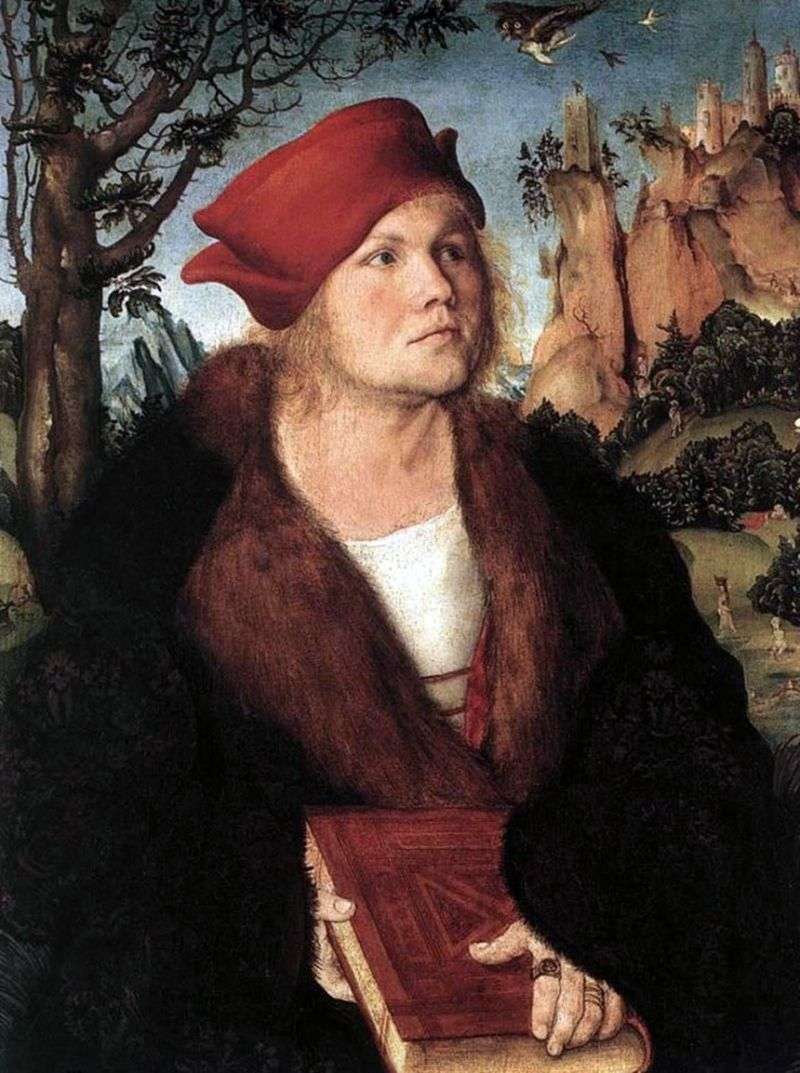 Dr. Johann Cuspinian by Lucas Cranach
Dr. Johann Cuspinian by Lucas Cranach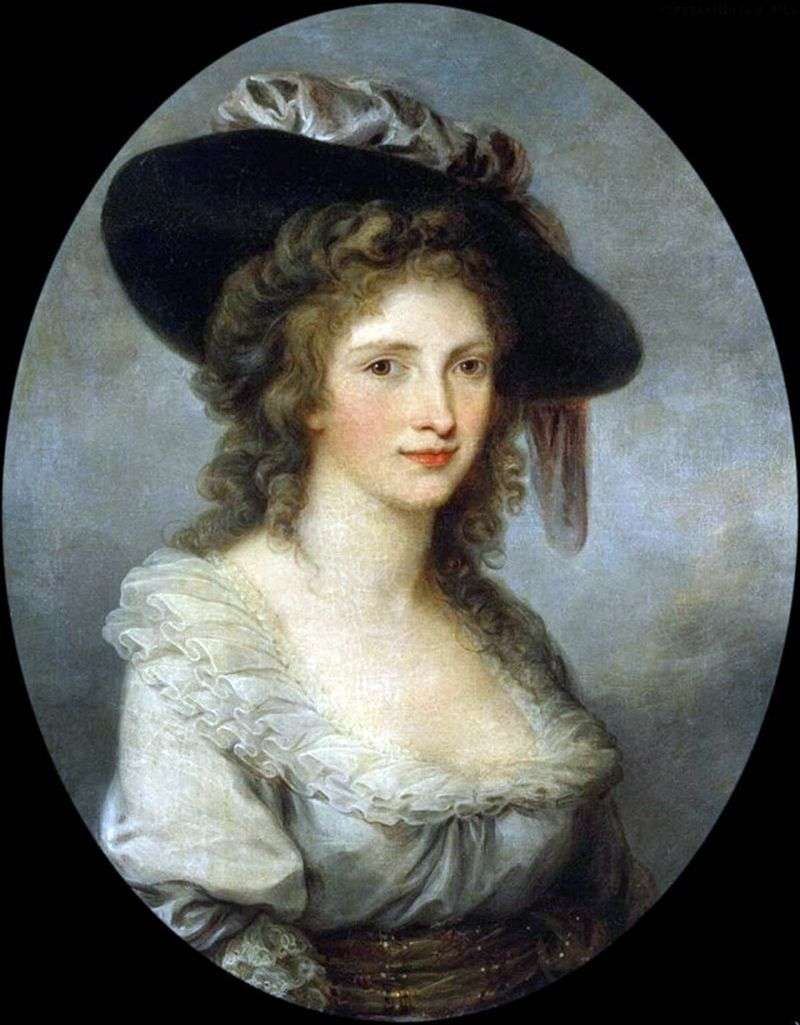 Self-portrait in a hat with a silk bow by Angelika Kaufman
Self-portrait in a hat with a silk bow by Angelika Kaufman